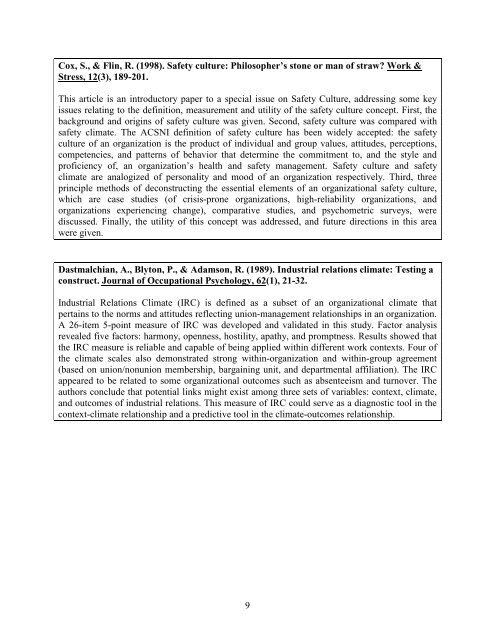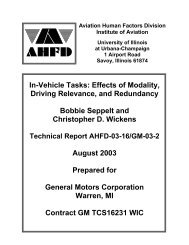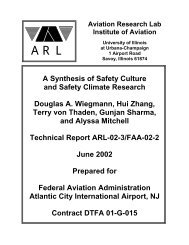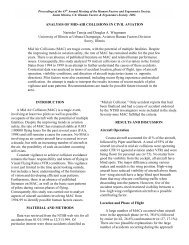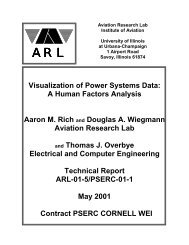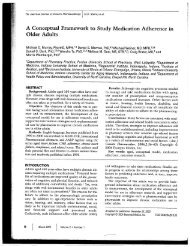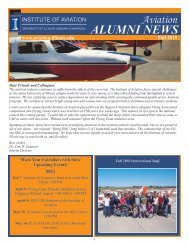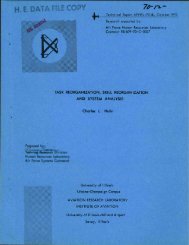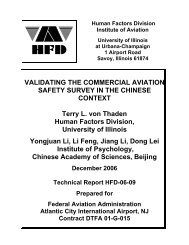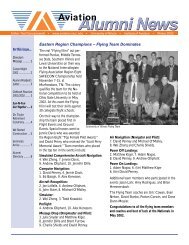Defining and Assessing Safety Culture in High Reliability Systems
Defining and Assessing Safety Culture in High Reliability Systems
Defining and Assessing Safety Culture in High Reliability Systems
Create successful ePaper yourself
Turn your PDF publications into a flip-book with our unique Google optimized e-Paper software.
Cox, S., & Fl<strong>in</strong>, R. (1998). <strong>Safety</strong> culture: Philosopher’s stone or man of straw Work &<br />
Stress, 12(3), 189-201.<br />
This article is an <strong>in</strong>troductory paper to a special issue on <strong>Safety</strong> <strong>Culture</strong>, address<strong>in</strong>g some key<br />
issues relat<strong>in</strong>g to the def<strong>in</strong>ition, measurement <strong>and</strong> utility of the safety culture concept. First, the<br />
background <strong>and</strong> orig<strong>in</strong>s of safety culture was given. Second, safety culture was compared with<br />
safety climate. The ACSNI def<strong>in</strong>ition of safety culture has been widely accepted: the safety<br />
culture of an organization is the product of <strong>in</strong>dividual <strong>and</strong> group values, attitudes, perceptions,<br />
competencies, <strong>and</strong> patterns of behavior that determ<strong>in</strong>e the commitment to, <strong>and</strong> the style <strong>and</strong><br />
proficiency of, an organization’s health <strong>and</strong> safety management. <strong>Safety</strong> culture <strong>and</strong> safety<br />
climate are analogized of personality <strong>and</strong> mood of an organization respectively. Third, three<br />
pr<strong>in</strong>ciple methods of deconstruct<strong>in</strong>g the essential elements of an organizational safety culture,<br />
which are case studies (of crisis-prone organizations, high-reliability organizations, <strong>and</strong><br />
organizations experienc<strong>in</strong>g change), comparative studies, <strong>and</strong> psychometric surveys, were<br />
discussed. F<strong>in</strong>ally, the utility of this concept was addressed, <strong>and</strong> future directions <strong>in</strong> this area<br />
were given.<br />
Dastmalchian, A., Blyton, P., & Adamson, R. (1989). Industrial relations climate: Test<strong>in</strong>g a<br />
construct. Journal of Occupational Psychology, 62(1), 21-32.<br />
Industrial Relations Climate (IRC) is def<strong>in</strong>ed as a subset of an organizational climate that<br />
perta<strong>in</strong>s to the norms <strong>and</strong> attitudes reflect<strong>in</strong>g union-management relationships <strong>in</strong> an organization.<br />
A 26-item 5-po<strong>in</strong>t measure of IRC was developed <strong>and</strong> validated <strong>in</strong> this study. Factor analysis<br />
revealed five factors: harmony, openness, hostility, apathy, <strong>and</strong> promptness. Results showed that<br />
the IRC measure is reliable <strong>and</strong> capable of be<strong>in</strong>g applied with<strong>in</strong> different work contexts. Four of<br />
the climate scales also demonstrated strong with<strong>in</strong>-organization <strong>and</strong> with<strong>in</strong>-group agreement<br />
(based on union/nonunion membership, barga<strong>in</strong><strong>in</strong>g unit, <strong>and</strong> departmental affiliation). The IRC<br />
appeared to be related to some organizational outcomes such as absenteeism <strong>and</strong> turnover. The<br />
authors conclude that potential l<strong>in</strong>ks might exist among three sets of variables: context, climate,<br />
<strong>and</strong> outcomes of <strong>in</strong>dustrial relations. This measure of IRC could serve as a diagnostic tool <strong>in</strong> the<br />
context-climate relationship <strong>and</strong> a predictive tool <strong>in</strong> the climate-outcomes relationship.<br />
9


